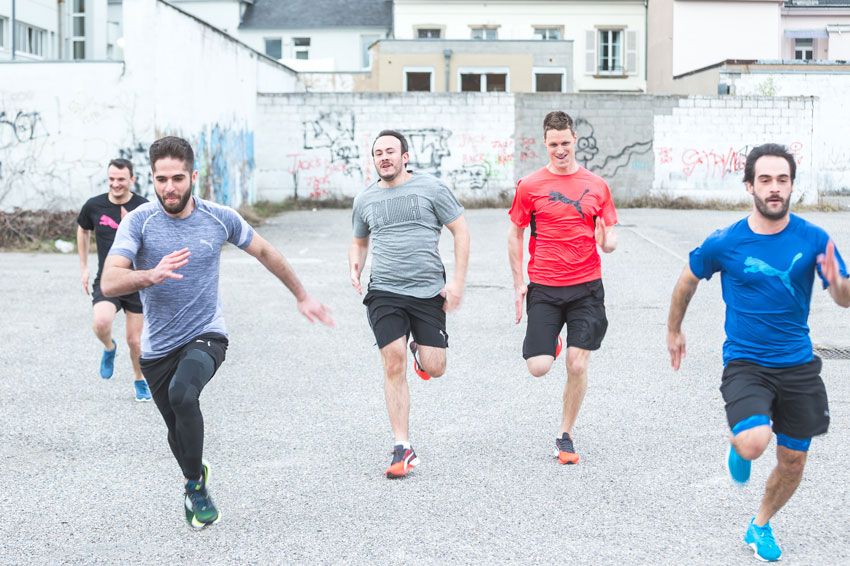Whether you’re an experienced athlete or a fitness beginner hungry for a challenge, working out with the HIIT method is just what you need. The workouts use short periods of exercises that have a higher demand on your body than low-intensity steady-state cardio (LISS cardio). But these two types of training have their own advantages. The FizzUp trainer is comparing how HIIT and steady-state endurance training change your muscles, metabolism and cardiovascular system to help you decide which method is best for you depending on your goal and fitness level.
Some say that low-intensity steady-state cardio is the best kind of exercise to lose weight because it puts in you in a constant “fat-burning mode.” It’s also a low-impact option, which is great if you want to stay energized and easily burn calories.
With high-intensity interval training (HIIT), you burn more calories in less time than a low-intensity steady-state cardio workout and enjoy a wide range of benefits, both in terms of your health and athletic skills. The one thing that lots of physically active people love about HIIT is that it doesn’t take long to do. If you want to turn your routine up a notice, you can get an effective workout done in just 10 minutes.

Before we compare these two types of training, let’s first break each one down:
Any kind of cardio training involves continuous low to moderate-intensity physical activity for an arbitrary, yet prolonged period of time. In terms of intensity, a person’s heart rate should be between 50 and 70% of their maximum heart rate.
For example, 60 minutes of moderate-intensity running or cycling (at 70% of your maximum heart rate.
HIIT uses workouts based on sets of exercises repeated for short periods of time (five minutes or less) and are performed above the anaerobic threshold (giving the exercise 100% effort) with a short rest time between intervals. Shooting for 100% of your maximum heart rate is a key part of this method. This is what makes HIIT so effective.
Then you can move on to high-intensity activities such as track sprinting or bike sprinting for 10 to 60 seconds with a period of active or passive recovery between each bout of effort with a ratio between 1:1 to over 1:4, compared to the effort you’re making (for example, 30”/30” or 10”/40”).
For example, alternating between six 30-second high-intensity sprints and six 60-second bouts of low-intensity effort, followed by a 4-minute rest time.
Now that we’ve taken a close look at each, let’s see what the advantages and disadvantages are for each type of training method to help you make the best choice.
Advantages
Disadvantages

Advantages
Disadvantages
So which one should you choose? That depends on your fitness goal and personal tastes. The best kind of cardio will vary widely from person to person and your goal, fitness level, athletic experience, etc.
Because FizzUp uses short and intense workouts based on HIIT and over 200 bodyweight exercises, the possibilities are endless in your fitness routine. Using FizzUp’s app, you can work out wherever and whenever you want with less time and effort for visible results.
If your goal is to burn more calories in less time, then start a grueling HIIT workout. But remember, after a workout like this, if you’ve given it your all, you’ll probably be exhausted and won’t be able to do the same HIIT workout the next day, which wouldn’t be the case with low to moderate-intensity cardio.

Low-intensity steady-state cardio offers the same benefits. The only difference is that it takes more time to get the same results. It’s a bit like strength training:
These two kinds of cardio training improve several aspects of your health and physical fitness, although in some cases, HIIT’s short bouts of intense exercise lead to better improvements. HIIT is for people who are short on time or want a more intense workout. It’s also ideal for athletes who are currently want to train for a particular sport.
Beginners should stick with aerobic workouts and eventually add HIIT to their routine. HIIT is hard on your body because it requires 100% effort. That’s why we recommend only doing two to three HIIT workouts a week for beginners so that they have enough time to recover and improve over time.
Mixing both methods is a surefire way to improve your overall cardiovascular endurance. However, if you have to make a decision, choose the type of cardio that suits your goal and makes you most comfortable so that you’re more likely to put more effort into your workout and stick with your routine.
A better body and physical fitness shouldn’t wait. Start your program and rely on HIIT and FizzUp fitness training to get real results.
Join the 7 million users already registered on FizzUp
Join us